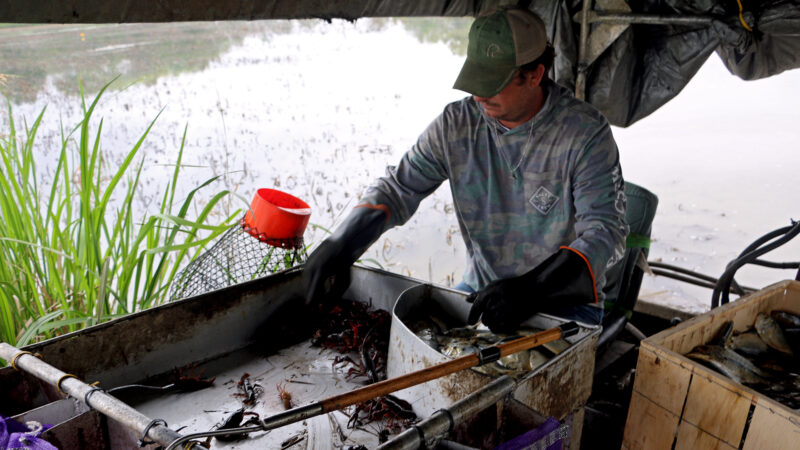Birmingham: Suburbanly Divided
This is where Birmingham meets perimeter, where the city’s tentacles extend deep in its metropolitan area.
It is a success story for Birmingham. The city annexed the land years ago, and is now collecting taxes from the dozens of stores and restaurants that encompass the behemoth Summit shopping complex.
But it is one of only a handful of success stories in a myriad of battles. And now the city is swallowed whole by a periphery of smaller cities that have an agenda all their own.
“There are certain aspects of our civic character here in Birmingham that are just engrained as a result of the way this community developed as a one industry town. Very paternalistic, colonialist mentality.”
Mark Kelly is a freelance writer and former advisor to Birmingham Mayor Bernard Kincaid. He says the tumultuous early days of the so-called Magic City stuck – the days of people pitted against one another.
“Very striking dichotomy between rich and poor, between labor and management, business the business community and government… between black and white. And those dichotomies have shaped the way that we as a city and community deal with problems.”
Many of those tensions date back to the early iron and steel days of old Birmingham and its tens of thousands of U-S Steel employees. Kelly says the city is unique in America with the way it was founded and developed because of its roots as a one industry town.
Cities that developed over time around Birmingham competed against it for jobs and industry. A sort of sibling relationship, without the warm and fuzzy family holiday.
But over the years, the area has acclimated – begrudgingly – to the economy, to a changing workforce and, of course, and most infamously, to civil rights. But the fierce municipal battles continue today.
“We haven’t had anybody, we haven’t had any government who’s sort of taken a regional approach to any of this.”
Dr. Bob Corley is Director of the Global and Community Leadership Honors Program at UAB.
“We don’t make any effort to try to pull together, to cooperate, to try to build any kind of sense of community. (Well, there have been initiatives that’ve taken place over the years: the “One Great City” and the merging of Birmingham with Mountain Brook and Homewood) Well everyone of those efforts has been thwarted or shipwrecked on the shores of racism or class prejudice. Folks think that they’re going to lose something that’s – for them – rather important if that were to happen. That they would lose some control over their own destinies.”
“Part of Birmingham has always been inner city and suburban. Before that in the legislature, it was rural against Birmingham, big bad Birmingham, had to fight Birmingham. The division has just been there and it’s hard to get over.”
Former Birmingham Mayor Richard Arrington sees it as a city-suburban chasm, this idea that politicians in smaller cities and surrounding counties have no interest in what happens in Birmingham – and more importantly don’t want anything to do with it.
“…because you’re asking most of them to take a stand that’s going to be very unpopular in their area. So we’d rather build ten small civic centers the size of this room where you could have 100 folk at a convention than build one huge one where it would promote the whole area and compete for big conventions. Things would happen but we don’t see that.”
Arrington says he left city hall -quote- broken hearted, because of divides within the city and with the suburbs. He says he took a big hit with the failure of the MAPS proposal, the Metro Area Projects Strategy that included a dome stadium, mass transit and other regional matters.
And the city population continued to shrink under Arrington’s five terms – something that’s been happening for the better part of five decades.
The city of Hoover collected many of the people who left Birmingham. Now with a population of more than 70-thousand, it is the state’s sixth largest city.
Its current mayor, Tony Petelos, is a former state legislator and former member of the Jefferson County delegation – which represents the county at the statehouse. Petelos says there isn’t a better example of a divide than this group of 18 lawmakers. He says his time in Montgomery as part of the delegation was plagued by in-fighting and disorganization.
“Unfortunately, the Jefferson County delegation was not in sync or on the same page, so therefore we were left behind in many cases. The Jefferson County delegation was evenly divided among 9 whites, 9 black legislators; 9 Republicans, 9 Democrats. So it was very divided.”
“It’s hard to get them to agree on whether the sun is shining sometimes, much less ‘here’s a project that all of us can support’ or ‘let’s try and get this through the legislature’ or ‘let’s try and get the governor’s support.'”
Bob Blalock is Editorial Page Editor of The Birmingham News. He covered city hall for years and watched the antics in Montgomery hurt the Birmingham region.
But he says there have been bright spots lately.
“You know we did see an example of some cooperation last year, in this most recent session, when there was increased funding for UAB included in the budget. And there was a situation where you had the legislative delegation on board, the mayor on board, the city council on board, the business leaders on board. And it made a difference.”
The lawmakers, Blalock says, worked together because they knew it was in the region’s best interest. Another bright spot is the fact that state lawmakers and municipal leaders in the region have been meeting over the past year and discussing regional issues.
But Blalock reiterates that that’s more the exception than the rule.
And most times, nothing gets done. Again, former Mayor Richard Arrington.
“We do things backwards… it’s crazy. I mean, it makes no sense.”
Bob Corley says he’s constantly reminded about what an increasing number of school systems and dozens of surrounding cities and hundreds of politicians running in different directions – away from Birmingham – are saying.
“What the suburbs are saying is ‘what happens in Birmingham, happens in Birmingham’. That’s not the reality. The reality is that we are all – as Martin Luther King said – entwined in this same network of shared destiny. We work across city lines, we travel across city lines. The community itself incorporates all of that. And we’re better off if we can figure out a way to join together and have a common destiny as opposed to fragmented destinies that by thinking we can hang on to what we got by maintaining that. It’s an unrealistic expectation.”
Unrealistic because history has proven it. A city that began as a powerhouse is turning into an area that is powerless. No cohesion, certainly no trust, and no way of changing it for now.
Time after time, the people we talked to throughout our series – throughout the tour of regional challenges – talk about leadership. That there is a lack of it here, and that what there is of political and corporate and civic leadership need only come to the table to ultimately be dismissed.
Historians say it is a problem that’s plagued this area since the beginning with no signs of ever letting go.
Alabama’s racial, ethnic health disparities are ‘more severe’ than other states, report says
Data from the Commonwealth Fund show that the quality of care people receive and their health outcomes worsened because of the COVID-19 pandemic.
What’s your favorite thing about Alabama?
That's the question we put to those at our recent News and Brews community pop-ups at Hop City and Saturn in Birmingham.
Q&A: A former New Orleans police chief says it’s time the U.S. changes its marijuana policy
Ronal Serpas is one of 32 law enforcement leaders who signed a letter sent to President Biden in support of moving marijuana to a Schedule III drug.
How food stamps could play a key role in fixing Jackson’s broken water system
JXN Water's affordability plan aims to raise much-needed revenue while offering discounts to customers in need, but it is currently tied up in court.
Alabama mine cited for federal safety violations since home explosion led to grandfather’s death, grandson’s injuries
Following a home explosion that killed one and critically injured another, residents want to know more about the mine under their community. So far, their questions have largely gone unanswered.
Crawfish prices are finally dropping, but farmers and fishers are still struggling
Last year’s devastating drought in Louisiana killed off large crops of crawfish, leading to a tough season for farmers, fishers and seafood lovers.







